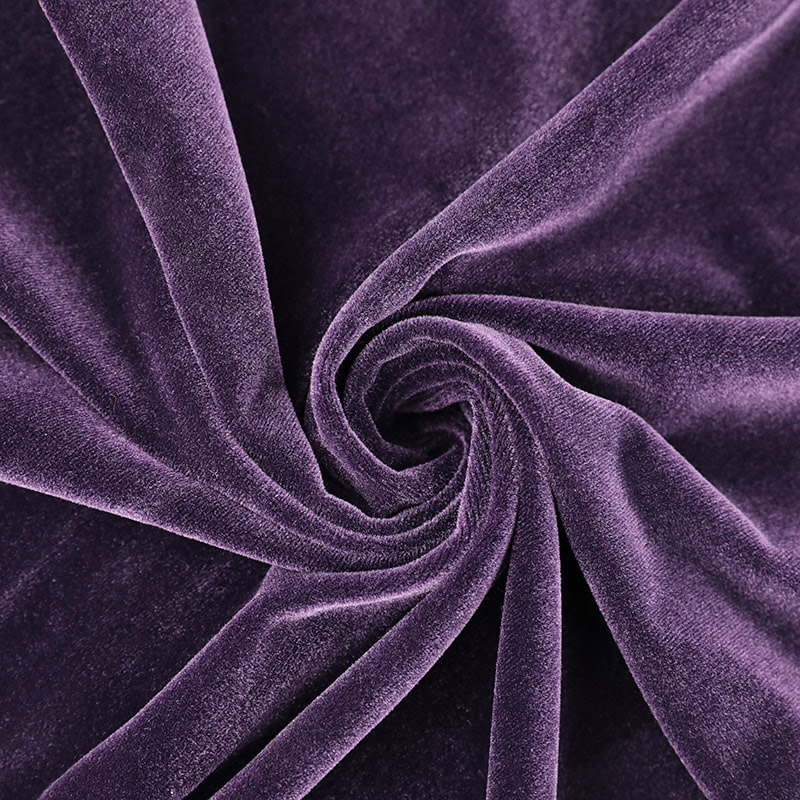The principle behind coloring
sun velvet fabric using reactive dyes is based on the chemical reaction that occurs between the dye molecules and the fabric fibers. Reactive dyes are designed to form covalent bonds with the fibers, creating a permanent and strong connection. Here's how the process works:
1. Dye Molecule Attachment:
- Reactive dyes are composed of molecules that have reactive groups, typically chlorine or bromine atoms, at one end. These reactive groups are attracted to the hydroxyl (OH) groups on the fabric's synthetic fibers, such as polyester.
2. Wetting and Penetration:
- The fabric is immersed in a dye bath containing the reactive dye solution. The fabric's hydrophobic nature may require pretreatment to improve dye absorption. Wetting agents and chemicals called dispersants can be used to facilitate dye penetration.
3. Alkaline Environment:
- The dye bath is typically alkaline, with a pH between 10 and 12. Alkalinity helps to open up the fiber structure, allowing dye molecules to access the fiber's interior.
4. Dye Hydrolysis and Activation:
- The alkaline environment triggers the hydrolysis (breakdown) of the reactive groups on the dye molecules. This creates a highly reactive form of the dye called a "reactive dye intermediate."
5. Covalent Bond Formation:
- The reactive dye intermediate forms a covalent bond with the hydroxyl groups on the fabric fibers. This chemical reaction results in a strong and permanent attachment between the dye and the fabric.
6. Washing and Fixation:
- After dyeing, the fabric is thoroughly rinsed to remove any unbound dye molecules and residues. The fabric is then often subjected to heat (steam or dry heat) to complete the fixation process, ensuring the dye's stability.
7. Colorfastness and Durability:
- The covalent bonds formed between the dye and the fabric ensure excellent colorfastness and durability. The dye molecules are locked within the fiber's structure, making them resistant to fading, washing, and exposure to light.
8. Soft Feel and Comfort:
- Reactive dyes typically result in a soft hand feel on the fabric. The dye molecules do not create a stiff or crunchy texture, preserving the plush and comfortable qualities of sun velvet fabric.
The principle of using reactive dyes to color sun velvet fabric is rooted in the chemical affinity between the dye molecules and the synthetic fibers, along with the specific dyeing conditions that facilitate the bonding process. This chemical reaction allows the fabric to achieve vibrant and long-lasting colors while maintaining its desirable characteristics for outdoor comfort and durability.




 English
English русский
русский Español
Español عربى
عربى







